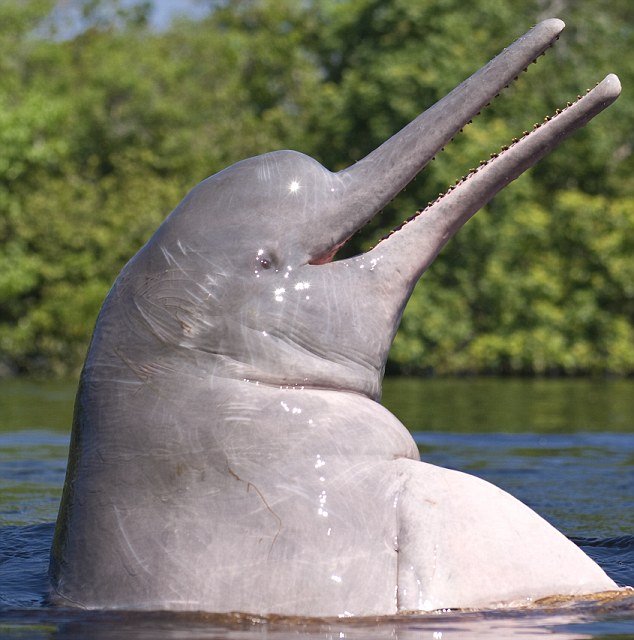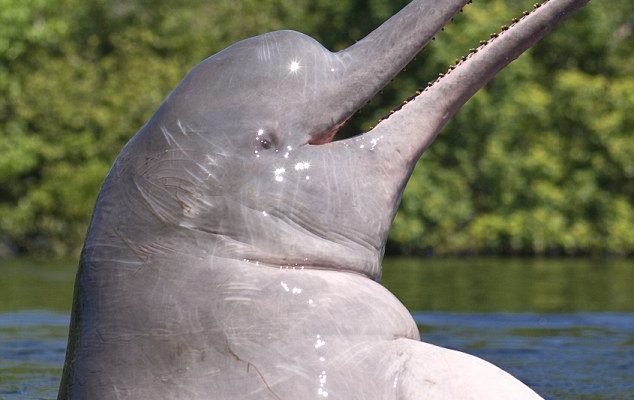
River dolphins, especially the Boto (Amazon river dolphin) and the Ganges river dolphin, are fascinating creatures. They’re adapted to life in freshwater, with unique features like long snouts and a somewhat awkward body shape. Their habitats are often murky, and they rely heavily on echolocation to navigate and find food. Yet, despite their unique adaptations, these dolphins face an uphill battle. As they swim through the waters they call home, they’re encountering all sorts of challenges, from pollution to habitat loss. Let’s explore these issues more closely.
What Makes River Dolphins Unique?
River dolphins have some pretty cool differences compared to their ocean cousins. For starters, they tend to be smaller and have a more slender body shape. While oceanic dolphins are often sleek and streamlined, river dolphins are a bit more robust. Their long, narrow snouts are packed with teeth that help them catch fish in their often-turbid environments.
Another interesting feature is their *lack of a dorsal fin*. Instead, river dolphins have a ridge along their backs. This adaptation helps them maneuver in shallow waters and navigate through obstacles like submerged branches or rocks. Plus, their vision is not as sharp as that of ocean dolphins since they spend most of their time in dark waters. So, they rely more heavily on their echolocation abilities to “see” their surroundings, making them quite unique among marine mammals.
You might find it fascinating that river dolphins also have complex social structures. They can communicate with each other through clicks and whistles, showing a level of social interaction that we’re still learning about. Each species has its quirks in behavior and social habits, but they all share that common trait of living in freshwater and needing a healthy ecosystem to thrive.
Why Are River Dolphins Endangered?
Despite their uniqueness, river dolphins are facing extinction. The International Union for Conservation of Nature (IUCN) classifies many river dolphin species as endangered or critically endangered. You might be wondering what exactly is putting them at risk. Let’s break it down.
One of the biggest threats is habitat loss. As rivers are dammed for hydroelectric power or diverted for agriculture, the natural habitats of these dolphins are being ripped apart. When their habitats shrink, the dolphins have to compete for food and space, making their survival more challenging.
Another significant threat is pollution. Rivers are often dumping grounds for industrial waste and plastic. This contamination affects the fish they consume, leading to poor health in the dolphin populations. It’s heartbreaking to think that something as simple as throwing trash away can have such profound effects on wildlife.
Additionally, there are issues with bycatch—when dolphins get accidentally caught in fishing gear. This unintended consequence of fishing practices can lead to injury or death for many river dolphins. With these pressures mounting, it’s no wonder that the populations are dwindling.
Conservation Efforts Around the World
Efforts are being made to help save river dolphins, and it’s inspiring to see people come together to protect these unique creatures. Various organizations are working on conservation strategies that focus on habitat protection and restoration. For instance, creating protected areas or reserves can help ensure that river dolphins have safe places to live and thrive.
Additionally, some initiatives focus on reducing pollution. Many groups are advocating for stricter regulations on waste disposal into rivers and promoting clean-up efforts to remove trash and toxic substances from these vital waterways. It’s a significant step forward, but there’s still a long way to go.
Education is another key part of conservation. By spreading awareness about river dolphins and their plight, organizations hope to inspire local communities to take action. This can mean anything from reducing plastic use to participating in dolphin-watching tourism in a responsible manner. When communities understand the value of their natural resources, they may be more likely to protect them.
How You Can Help River Dolphins
So, what can you do to contribute to the conservation of river dolphins? There are plenty of ways to make an impact, even if you’re not living in a river community.
– Educate Yourself and Others: Start by informing yourself about river dolphins and their habitats. Share this information with friends and family. The more people know, the bigger the impact we can have together.
– Support Conservation Organizations: Many groups are actively working to protect river dolphins. Consider donating to a conservation outfit or participating in fundraising efforts. Every little bit helps!
– Reduce Plastic Use: One of the most straightforward ways to help is by cutting down on your plastic consumption. Use reusable bags, bottles, and containers to help minimize waste that can end up in rivers.
– Participate in Clean-ups: Find local clean-up events for rivers or beaches. Not only do these initiatives help beautify the area, but they also protect aquatic life, including river dolphins.
– Be Mindful of Your Water Use: If you live near a river, be conscious of what goes into it. Avoid using harmful chemicals in your yard and ensure you’re following guidelines for disposal.
The Future of River Dolphins
The future of river dolphins depends on the collective efforts of individuals, communities, and organizations worldwide. If we can work together to tackle the challenges they face, there’s hope for these remarkable creatures. The goal is to create a sustainable and healthy environment for river dolphins to thrive in.
As we continue to learn more about these dolphins, it’s vital to remember that every action counts, no matter how small. Whether it’s getting involved with local conservation efforts or simply spreading the word, your involvement can make a difference.
These unique mammals remind us of the beauty and fragility of our planet’s ecosystems. By caring for them, we’re also caring for ourselves and the natural world around us. Let’s make sure that the gentle sounds of river dolphins echo through our waterways for generations to come.
In conclusion, while river dolphins face significant threats, there are concerted efforts underway to protect them. By staying informed and taking action, we can all play a role in ensuring these enchanting creatures are not only preserved but celebrated. Together, we can make a splash in the fight for river dolphin conservation!

